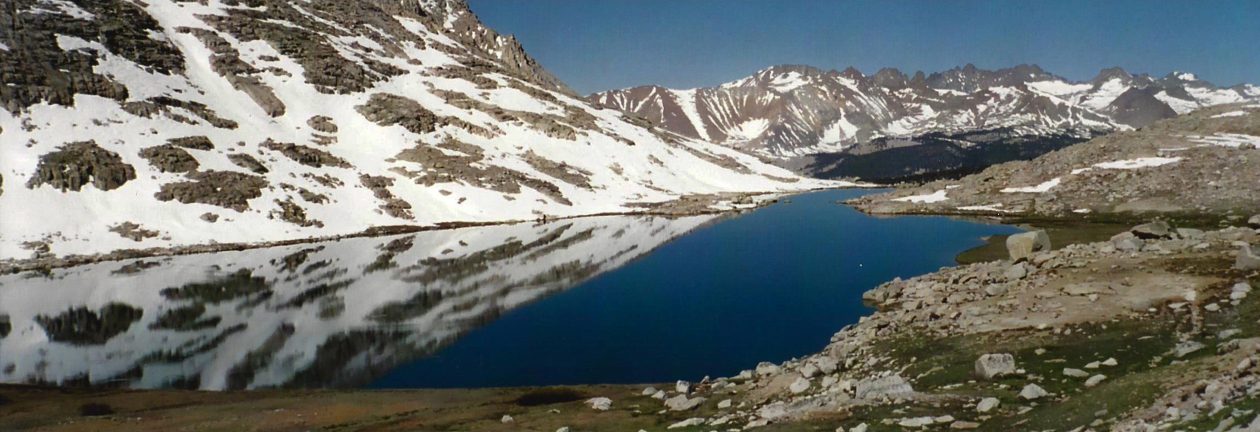Axum, Ethiopia
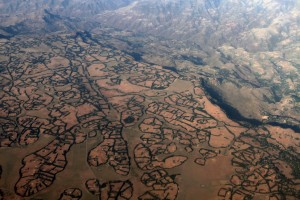
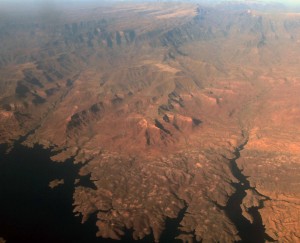
I woke up at 04:00 today, got ready, realized the wooden floor and the bottoms of my bags were wet (apparently the hotel had spilled a lot of water last night while preparing for their Timkat celebrations, scheduled for today), and then went outside in the hotel’s parking lot to wait for my scheduled taxi at 05:00. Of course the taxi didn’t come and the night watchman could not get a hold of the hotel manager, so the night watchman called a taxi for me. The taxi arrived at 05:15 and the driver asked for 300 birr, but I told him 200 was all I had and that’s what the hotel manager said it would cost anyway; soon the taxi driver relented and accepted me for 200 birr. We drove to Addis Ababa Bole International Airport and the taxi driver tried to sustain a conversation, but his English was terrible; I tried the best I could to respond, but most of the time it felt like we weren’t getting through to each other. We reached the airport, I paid the taxi driver, checked in, and then went to the Departures waiting lounge (it was very quick and easy to check in to this airport; this means that Kathmandu is still the worst airport to check in to from all the ones I have been to); while waiting, I had a cappuccino and then a beer for breakfast, and I read some. At 06:30, I went to the gate and at 07:20, the other passengers and I boarded the plane (as a United Nations aircraft was being taxied); soon we took off to Axum (at roughly 08:00). It was an hour flight and during it, I had the complimentary sandwich (some generic sliced meat, vegetables, and mustard), I finished reading ‘Islands in the Stream’ (a depressing, but great book), and tried to stay as far away from the man sitting next to me who kept coughing (I feared that he may have had the Ebola virus).
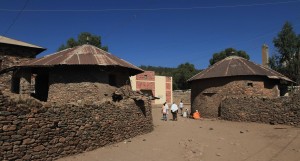
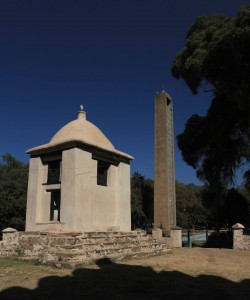
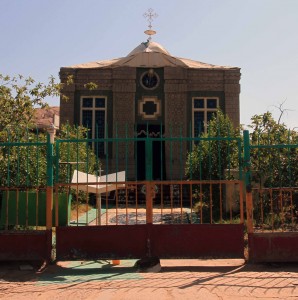
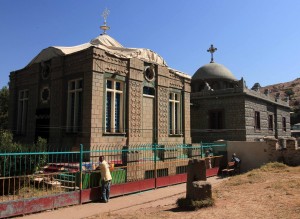
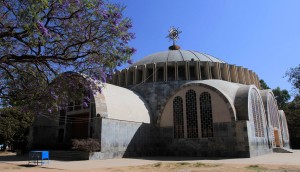
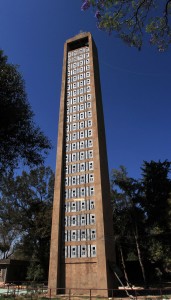
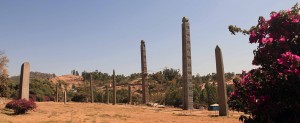
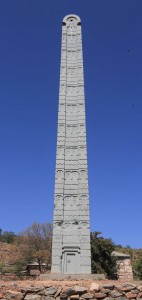
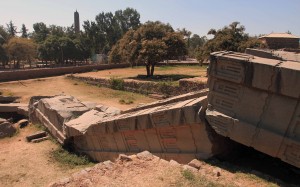
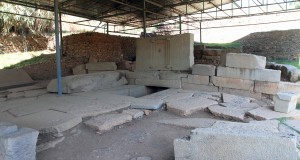
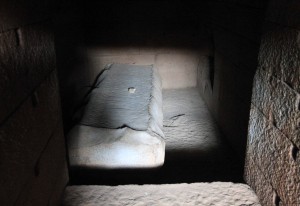
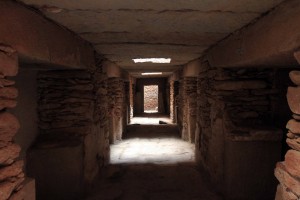
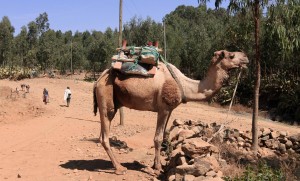
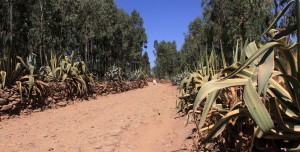
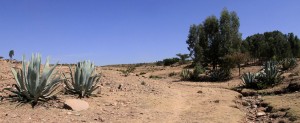
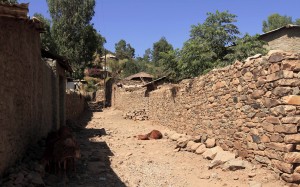
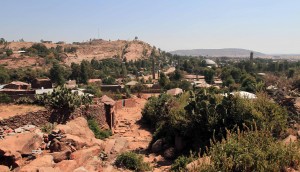
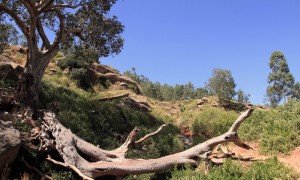
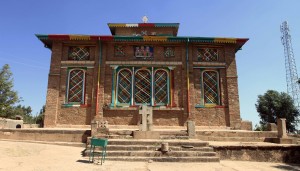
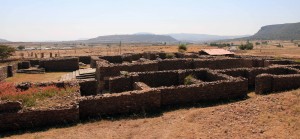
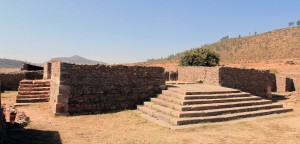
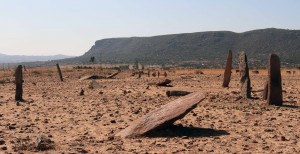
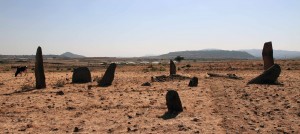
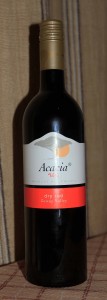
The aircraft landed at Axum (or “Aksum”, depending on what map you go by) after 09:00, I grabbed my checked bag, and then took the free hotel shuttle bus to a hotel that was recommended on wikitravel.org. The hotel wasn’t much, but looked clean enough, had no detectable bed bugs, and – most important – was cheap (at 200 birr a night). After checking in to the hotel and listening to some tour packages (all too expensive for me), I went out to explore Axum. I immediately walked to the Chapel of the Tablet (where the Ark of the Covenant is supposed to be kept), entered in through the west gate, viewed the chapel and saw the Church of St. Mary of Zion; then a man came up asked to see my ticket, which of course I didn’t have since I never passed a ticket counter and had no idea where it was; I was then directed to the ticket counter at the east gate, but opted not to visit the churches today since I only had 300 birr in my wallet (the ticket cost 200 birr) and I still had two more days in this town. So, I walked to the Northern Stelae Field (located at the foot of Bete Giorgis) instead (located right next to the churches) and bought a five-day, 50 birr ticket to see the archaeological sites around Axum. I walked around the Stelae Field and many are still standing, though the largest (the “Great Stele”), at thirty-three meters height and 500 tons had toppled over in the past and now lies in broken segments on the ground; the second largest stele (the Obelisk of Axum), at twenty-four meters tall, was looted by the Italian fascists in 1937, but was repatriated to the field in 2008; the third tallest stele, at twenty-three meters, is still standing today in the field today, but with noticeable assistance; I also walked down in to a tomb that is open to the public and then I walked inside the Tomb of the False Door (also known as the “Tomb of Remhai”). After walking around the Stelae Field, I went inside the Archaeological Museum and learned about the Ancient Axumite Kingdom. Next, I walked north, past the water reservoir known as “Queen Sheba’s Bath”, where a few kids were bathing, and on to a dusty road through a scattering of stone and mud houses. I was walking toward the Tomb of Kelab, but, based on the poor map I had purchased at the Stelae Field, I thought I should’ve reached it at a certain point, did not, and decided to turn around (I later learned it was about two kilometers further down the road and I will visit it tomorrow). I then walked back through the rustic village of stone houses and up a rocky path toward the top of Bete Giorgis (I really enjoyed this walk through the farmed countryside with stone dwellings and I was glad to be here and out of Addis Ababa); I had a decent view of the surrounding town and structures, and then turned back down. Once back on the dusty road, near the monastery, a gust of wind tore through and I took shelter from the pounding dust with several locals in the monastery; after the wind died down, I walked south toward the ruins known as Dingur (on the way a little kid with an upside-down star etched in to his forehead followed me for a short distance; he didn’t say anything, but laughed every now and then – this is one of the creepiest moments of my life and the fanciful part of my brain thought he might be possessed by some demonic power; I quickly picked up my pace and got away from him as soon as possible). After walking for some time on the road, heading west, I reached Dingur (known as “Queen Sheba’s Palace”, but probably just the home of a great noble class family). I walked around the “palace” ruins, which had over fifty rooms and a giant brick oven in the kitchen, and then crossed the road south, to the Gudit Stelae Field, which had much smaller stelae compared to the Northern Stelae Field; there were also some children playing soccer with a home-sewn ball on a flat patch of ground in the Stelae Field. After touring the Stelae Field, I decided to call it a day and walk back to my hotel room, grabbing some much needed cash and cold water along the way. I then reached my hotel room and relaxed, listened to some jazz (Charlie Parker and Duke Ellington), and typed out some journal entries. At 19:00, I walked to a nearby, better hotel for dinner and had a chicken pizza and beer. After dinner, I returned to my hotel room and relaxed while listening to Ella Fitzgerald. Later on I had a bottle of Ethiopian dry red wine that was produced in the Zeway Valley; it tasted of apples, leather, honey, and green pepper. After finishing that rather mediocre wine, I eventually, I fell asleep.
